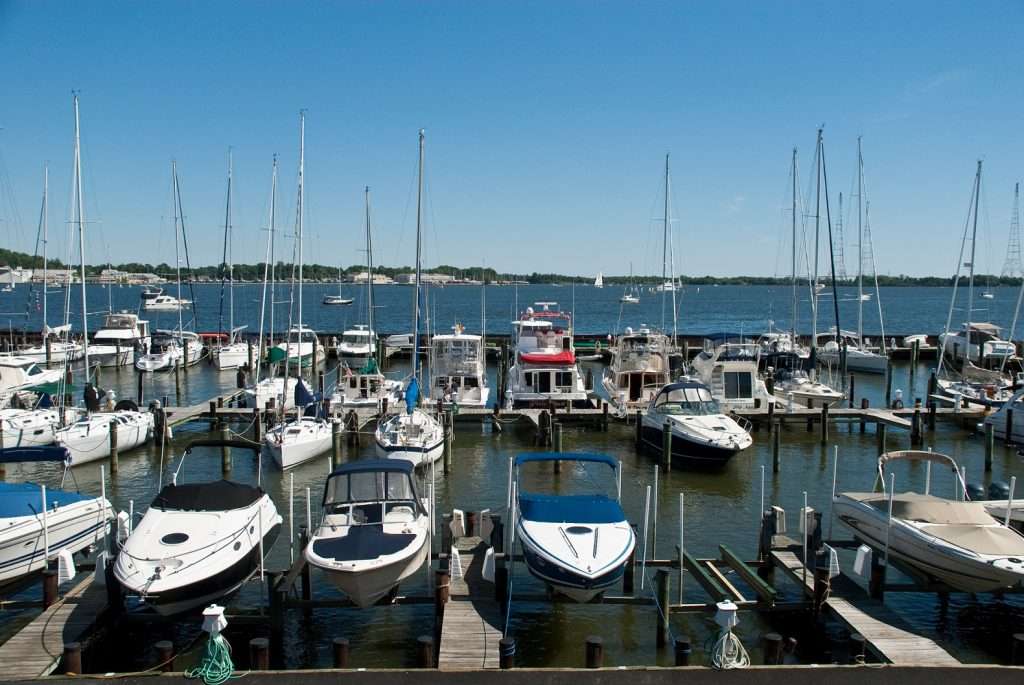It’s hard to believe that we are already over 1/2 the way through the year, and the boating season in the Mid-Atlantic is cruising by (pun intended). With that in mind, how much revenue are we all leaving on the table, and what can we do about it? Reports this year show that occupancy has continued to be solid, with many of the marinas sharing that they are over that magical 90% mark! What has also come out of the surveys is that less than half of the marinas are showing an increase in profits year over year. This story is not new to anyone in the industry who has been around for a while, but it should be eye-opening and warrant further investigation and addressing.
Each year, we are faced with the duality of increases in every aspect of our industry, from insurance and staffing to decking and even fuel margins. Add those increases to being a service provider in an industry that relies heavily on customers’ “play money” and is often the first expense they look to cut during a downturn in the financial sector. By now, you should have had an opportunity to review the first few full months of the season at your facility. You should have started reviewing variance reports to understand the challenges better and identify opportunities for change. The industry reports indicate a 15% difference between the expense hikes at marinas and the changes in the slip fees to cover them. This cannot be read as the average marina is losing 15%, but rather, more so, that about 15% of the marinas that have seen increases in cost have not also increased their rates to cover their expenses.
Knowing this allows you, as an owner, to conduct further investigation and explore new ways to offset some of the uncontrollable increases in expenses without impacting your ability to attract customers through out-pricing yourselves.
A concept that we have all experienced one way or another that should be considered is the creation and implementation of the demand-score x price multiplier concept in our costing. A simple way to think of this is by watching how the pricing to get to the exact location can vary greatly when using Uber/Lyft. Want to go during demand times in a nicer vehicle? You’re paying a higher multiplier. Willing to wait or go on a ride with others, and you can share a ride. No sharing slips is not a possibility, but the rest of the concept is readily achievable, and implementation is straightforward.
Demand drivers could be things like major events, holiday celebrations, boat shows, and fishing tournaments. This is essential information not only for this exercise, but for operating your facility successfully. Add to this, though, things like events in the neighboring town, promotions that you are hosting, etc. From here, begin to look at and determine what the impact has typically been on your facility during one of these events. If the fireworks are shot right off your docks, that would be a high demand. A random Wednesday in May or September might be considered shoulder days.
Once you have the list, you can start looking at your rates and how to increase or decrease them to protect the rate, demand, and manage occupancy. Your typical weekend day during the season would be considered “base rate” and equal to 1.0 multiplier. From here, you can adjust your rate to meet the demands of a particular event or time. In Annapolis, the Blue Angels are on Tuesday and Wednesday before Memorial Day every year (United States Naval Academy graduation is Friday of Memorial Day weekend every year). The main show is on Wednesday, but “practice” day on Tuesday is almost as good and often attracts those looking to see them fly, but not interested in getting caught up in the several thousand boats vying for the perfect viewing spot in the flight path. For this event, we add a 1.4 multiplier, meaning that a slip that would typically cost $3 per foot per day now costs $4 a foot. While the $1 is not a big hike, it is a 40% increase in your slip rates for that day. Keep in mind, this is only for transient slips.
This strategy is particularly effective for significant events, ensuring you maximize the value of each available slip. The same concept should be considered during shoulder periods, out of season, and times that the slips will typically remain open and available. It is essential, when considering this type of strategy, to stay flexible and fluid, especially during the discount offers. Here you can start with only a few at “that price.” You can always add more, or just “sell out” of slips at that price point. As you are considering the discounted nights, it is important to keep two things in mind. First is an empty slip that can be refilled for that night, a last-minute discount rate that makes a few dollars can create a customer who will come back again and also makes a few dollars that would not have been otherwise available for that evening.
Another strategy to consider when reviewing your open slips and how to monetize them is dynamic pricing. The notion that every slip has the same value to every customer is somewhat of a fantasy. This exercise requires some effort and attention to detail from the leasing team. First, take an overview of all the slips in the marina, providing a rating to them based on a matrix that you feel is appropriate for your facility. Things to consider include the slip’s location, protection from elements (wind and current), and ease of dockage, among other factors. Once you have this matrix, review each slip against it and create a multiplier for each slip based on the results. In the concept slip, F7 sits just inside of a T-head on F dock, which is protected from the wind. This slip is very desirable and could warrant a modest bump over a slip tucked next to the bathhouse. Still, it’s located in an exposed portion of the marina and isn’t easily accessible from the parking area. This slip might remain open for quite some time, or a modest discount could provide for a quicker lease.
The concepts of dynamic pricing are well studied and shown through most industries to be something that provides a significant increase in profits. In one study that I read, they estimate that through focused use of dynamic pricing profits can increase in the low double digits. Increases like that make it tough not to want to consider.
The industry has evolved from a “we only do annual contracts” approach to a more customer-centric mantra of figuring out what works for your customer. But what does that cost you in terms of vacancies and turnover? In reality, if your team is delivering on the experience that your customers have shown to want, there are only a few fundamental reasons for them to leave, and none that you can really control. First is selling the boat, next being “we bought a house with a dock”, or we are moving, and this location is no longer viable. Beyond that, once a customer is at your facility, it is your and your team’s job to pay attention to their needs and deliver an experience that makes them come back. But for some, a full season in the water is not feasible. This is where some creativity comes into play, and offering seasonal contracts is a great option. Priced at a rate that is a discount to your annual rate, but not just an X-month/yearly rate, this allows you the ability to make some extra money and attract a customer who may choose a different facility for rate or flexibility because of the “old school” annual-only position. Conceptually, we review our pricing for a monthly slip, aiming to set the seasonal rate slightly higher than this rate. This typically works for the customer having a slip for six months at about 85% of the annual rate and provides them the flexibility that many would prefer of the extra time on either side of a four-month stay without then going into daily rates if they need to hold over.
In climates like Maryland, many of our customers pull their boats annually. While some think they have to, the truth is that every other year is usually acceptable, as long as you are getting it cleaned and maybe doing a short haul for inspection and painting in the meantime. What are you doing to support your customers for the winter months and make them realize how easy staying at your facility can be? If you don’t have your own service yard and team, do you have preferred vendors coordinated to come in and help with winterization, shrink wrapping, etc? There is a lot to consider when storing boats over the winter, which I’ll explore in a future email. In the meantime, it’s worth looking at ways to make the off-season as easy as possible to encourage returning customers.
Another successful way to lock that customer in for the season to come comes in “per-season” offerings. By this, I mean it is a time when you can look and offer a slight discount for contracts before a set date. This is even better if they are fully paid by that date. We have all encountered the phenomenon of the juggler’s hat, which occurs from the end of our transient season until the new season’s deposits arrive. By either giving a slight discount or providing an incentive to pay in advance, those fluctuations can be mitigated.
Tracking and communication are two keys to making these (and any) concepts work. Initially, suppose you are going to start using these concepts. In that case, it is essential to have a “cheat sheet” available with some reasonable and viable responses for the team to provide when someone, who is accustomed to the “old way of doing things,” wants to challenge your new direction. You are not trying to gouge pricing, but you are entitled to help mitigate the delta in what you are willing to raise your rates on all slips vs the ever-rising cost of doing business. Without a smooth and direct set of talking points, challenges will arise if your communication is not consistent and concise. The tracking side is just as important, but it operates behind the scenes. Here, the team begins to regularly call around to facilities, review online pricing and availability, and track that. This will help you understand the competition’s actions and offerings, enabling you to decide whether to adjust your course to follow the fleet or maintain your current approach, allowing the fleet to come to you.
Over the next few weeks, take the time to plan out the pricing for next season using a dynamic pricing model. You can always grandfather in current customers, but I would make sure to let them know you are doing so and limit how long they will stay at the current price. We have done this in the past, and as they increase, it comes into effect. We give them the option to remain in their current slip or look at other slips that we have open, with the pricing that they are currently on. What we have found is that most people tend to take the increase and remain where they are.
Understanding that minor tweaks can compound into significant gains. If you have ideas to share or thoughts you are looking to work through, feel free to reach out. No pressure, who knows what can happen from a well-intended conversation?

